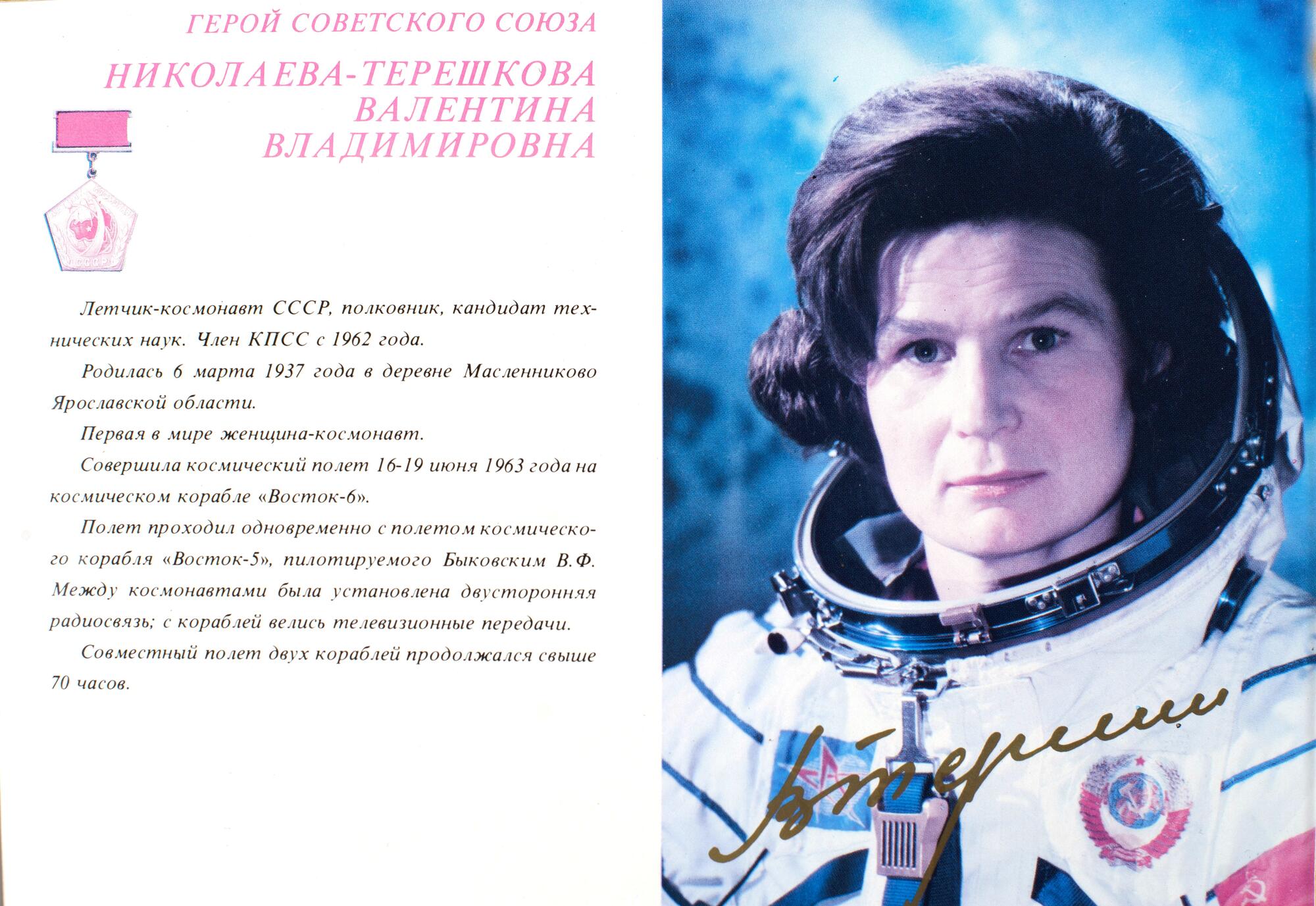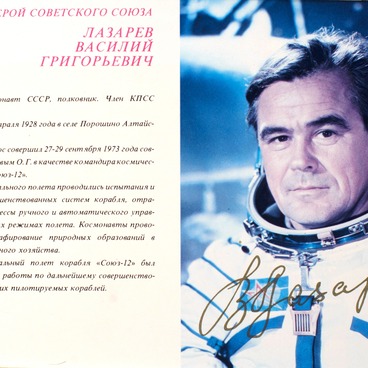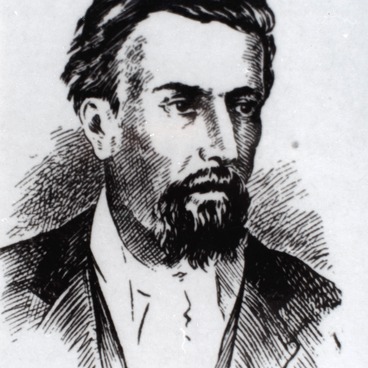Valentina Vladimirovna Tereshkova, the first woman in space, was born in the Maslennikovo village, Yaroslavl Region on March 6, 1937. Her father was a former tractor driver. He died in the Finnish Winter War. Her mother worked at a collective farm and after the Great Patriotic War, became employed at the Krasny Perekop cotton mill in Yaroslavl.
After graduating from a seven-year school and a school for working youth, Valentina Tereshkova continued her education by correspondence courses at the Yaroslavl Light Industry Technical School. She began working as a cutter in an assembly shop of a tire factory and later as a speeder in a roving shop. In the early 1960s, Valentina Tereshkova served as the secretary of the local Komsomol (Communist Youth League). At the same time, she trained as a competitive parachutist at the Yaroslavl Aero Club and jumped with a parachute over 150 items.
While the first male cosmonauts were selected from among fighter pilots, the first women to fly into space were chosen from parachute jumpers. The potential candidates had to be under 30 years old, have a height of up to 170 cm, and a weight of up to 70 kg. A list of fifty candidates was narrowed down to five. One of them was Valentina Tereshkova.
Women underwent all the standard training procedures alongside men, including isolation chambers, centrifuges, ejection escape, and lectures on equipment design. During the preparation stage, Tereshkova was not the group leader. She came short of her competitors: Irina Solovyova had superior physical abilities, and Valentina Ponomaryova — better theoretical knowledge. However, the project leaders Sergei Korolev and Nikolai Kamanin eventually chose Tereshkova who was socially active, had authority over other candidates and was good at public speaking.
Vostok 6, the first human space flight to carry a woman into space, was launched on June 16, 1963. Tereshkova landed almost exactly three days later — on the morning of June 19, after orbiting the Earth 48 times. The Vostok 6 descent module landed safely in the Bayevo District, Altai Krai.
The space mission was not entirely perfect: Tereshkova did not complete the research agenda, did not manage to handle the manual control system, and after landing, violated the strict prohibitions by eating potatoes and drinking kumis presented to her by the amazed locals. In spite of that, the female cosmonaut was awarded the title of Hero of the Soviet Union.
After the mission, Tereshkova became a Candidate of Science Engineering, professor, and author of over 50 academic papers.
After graduating from a seven-year school and a school for working youth, Valentina Tereshkova continued her education by correspondence courses at the Yaroslavl Light Industry Technical School. She began working as a cutter in an assembly shop of a tire factory and later as a speeder in a roving shop. In the early 1960s, Valentina Tereshkova served as the secretary of the local Komsomol (Communist Youth League). At the same time, she trained as a competitive parachutist at the Yaroslavl Aero Club and jumped with a parachute over 150 items.
While the first male cosmonauts were selected from among fighter pilots, the first women to fly into space were chosen from parachute jumpers. The potential candidates had to be under 30 years old, have a height of up to 170 cm, and a weight of up to 70 kg. A list of fifty candidates was narrowed down to five. One of them was Valentina Tereshkova.
Women underwent all the standard training procedures alongside men, including isolation chambers, centrifuges, ejection escape, and lectures on equipment design. During the preparation stage, Tereshkova was not the group leader. She came short of her competitors: Irina Solovyova had superior physical abilities, and Valentina Ponomaryova — better theoretical knowledge. However, the project leaders Sergei Korolev and Nikolai Kamanin eventually chose Tereshkova who was socially active, had authority over other candidates and was good at public speaking.
Vostok 6, the first human space flight to carry a woman into space, was launched on June 16, 1963. Tereshkova landed almost exactly three days later — on the morning of June 19, after orbiting the Earth 48 times. The Vostok 6 descent module landed safely in the Bayevo District, Altai Krai.
The space mission was not entirely perfect: Tereshkova did not complete the research agenda, did not manage to handle the manual control system, and after landing, violated the strict prohibitions by eating potatoes and drinking kumis presented to her by the amazed locals. In spite of that, the female cosmonaut was awarded the title of Hero of the Soviet Union.
After the mission, Tereshkova became a Candidate of Science Engineering, professor, and author of over 50 academic papers.



